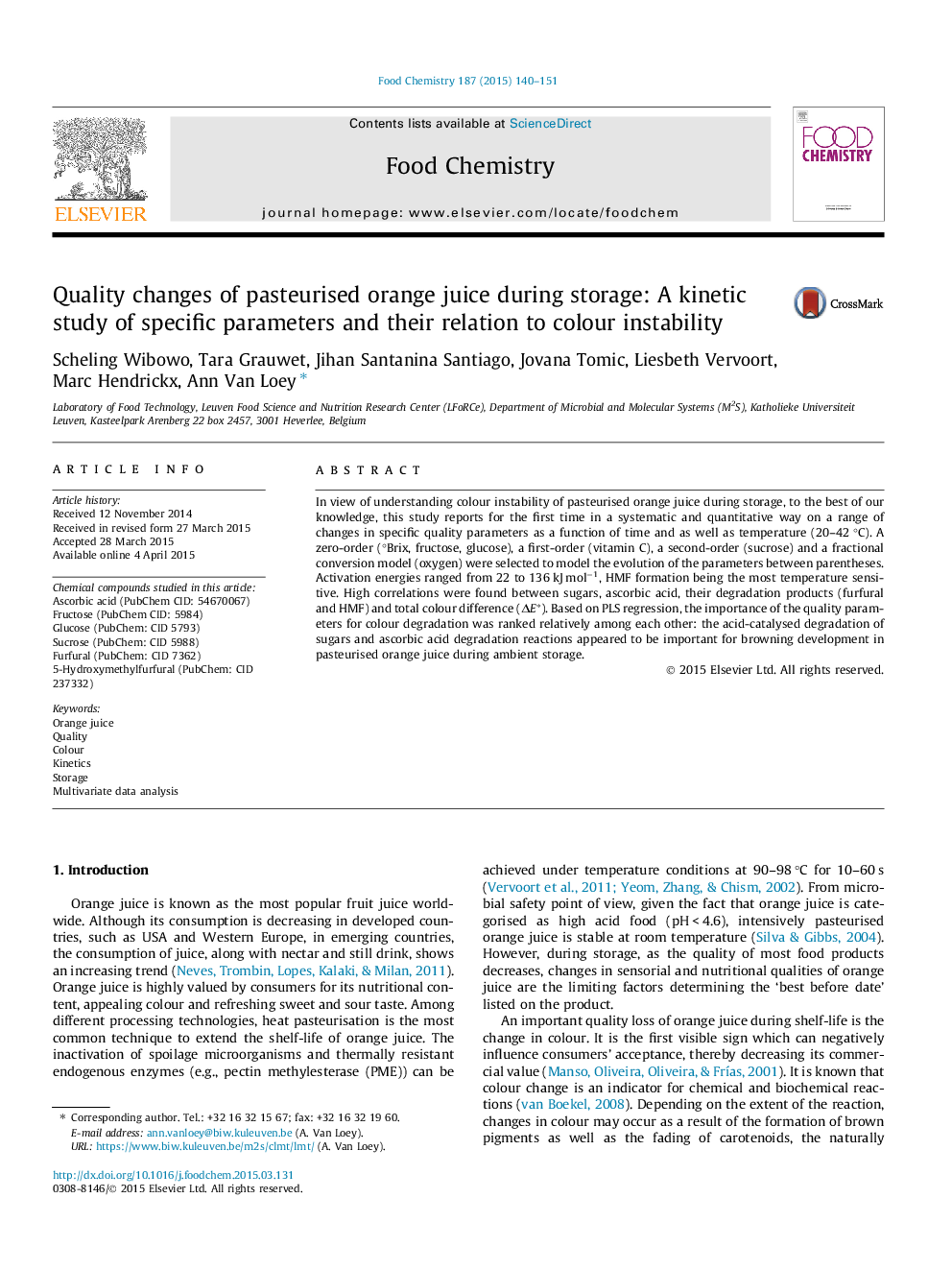| Article ID | Journal | Published Year | Pages | File Type |
|---|---|---|---|---|
| 7590930 | Food Chemistry | 2015 | 12 Pages |
Abstract
In view of understanding colour instability of pasteurised orange juice during storage, to the best of our knowledge, this study reports for the first time in a systematic and quantitative way on a range of changes in specific quality parameters as a function of time and as well as temperature (20-42 °C). A zero-order (°Brix, fructose, glucose), a first-order (vitamin C), a second-order (sucrose) and a fractional conversion model (oxygen) were selected to model the evolution of the parameters between parentheses. Activation energies ranged from 22 to 136 kJ molâ1, HMF formation being the most temperature sensitive. High correlations were found between sugars, ascorbic acid, their degradation products (furfural and HMF) and total colour difference (ÎEâ). Based on PLS regression, the importance of the quality parameters for colour degradation was ranked relatively among each other: the acid-catalysed degradation of sugars and ascorbic acid degradation reactions appeared to be important for browning development in pasteurised orange juice during ambient storage.
Keywords
Related Topics
Physical Sciences and Engineering
Chemistry
Analytical Chemistry
Authors
Scheling Wibowo, Tara Grauwet, Jihan Santanina Santiago, Jovana Tomic, Liesbeth Vervoort, Marc Hendrickx, Ann Van Loey,
